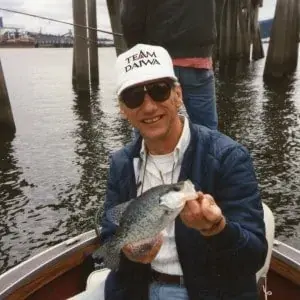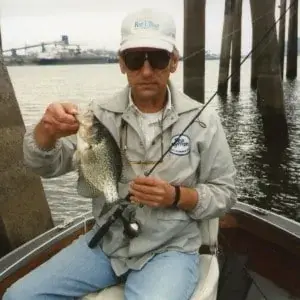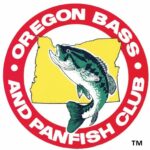Black Crappie vs White Crappie
By Bud Hartman
Crappie Cycles
We sometimes wonder why there are “good” and “bad” years. Crappie tend to be cyclic in populations. Fishing can be good for two to three years and then virtually disappear for a similar time period.


Oregon Crappie
Crappie are a popular game fish throughout most of the United States, with both black and white crappies widespread in their ranges.
Bud Hartman compiled this information on behalf of the Oregon Bass & Panfish Club.
Bud did a lot of warmwater fishing on the East Coast prior to coming to Oregon (compliments of the US Air Force). He immediately went to work selling fishing tackle at Freeway Sporting Goods, where the original Oregon Bass Club got its start. Bud has been a member of the club since the beginning (some 55 years ago) and is an Honorary Life Member. Bud works as an advisor and fish identification person as a volunteer with the Oregon Department of Fish and Wildlife. He has been an ardent supporter of the right for warmwater fish to exist in Oregon and he will continue to defend their presence in Oregon waters. Bud is also a longtime member of the Warmwater Working Group with ODFW.
